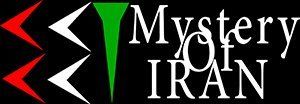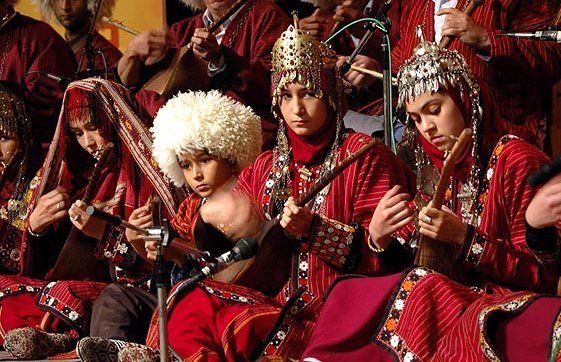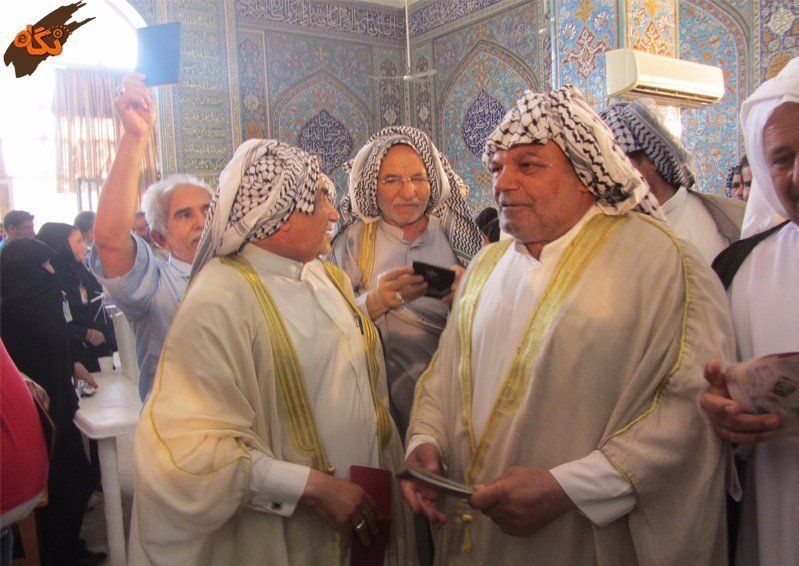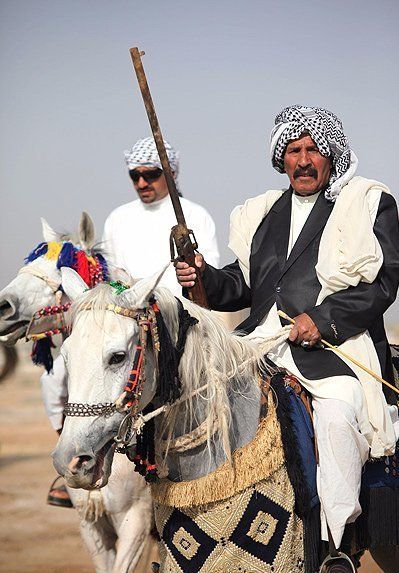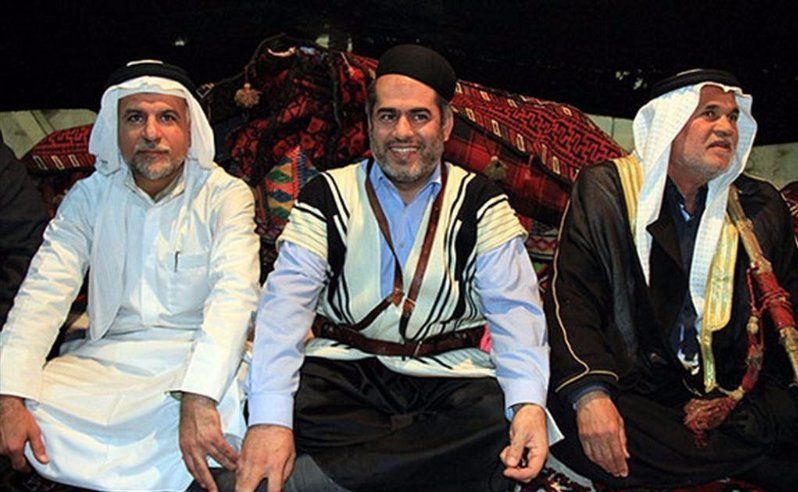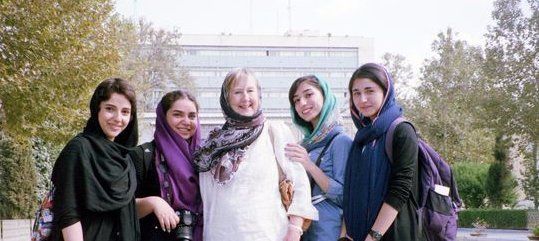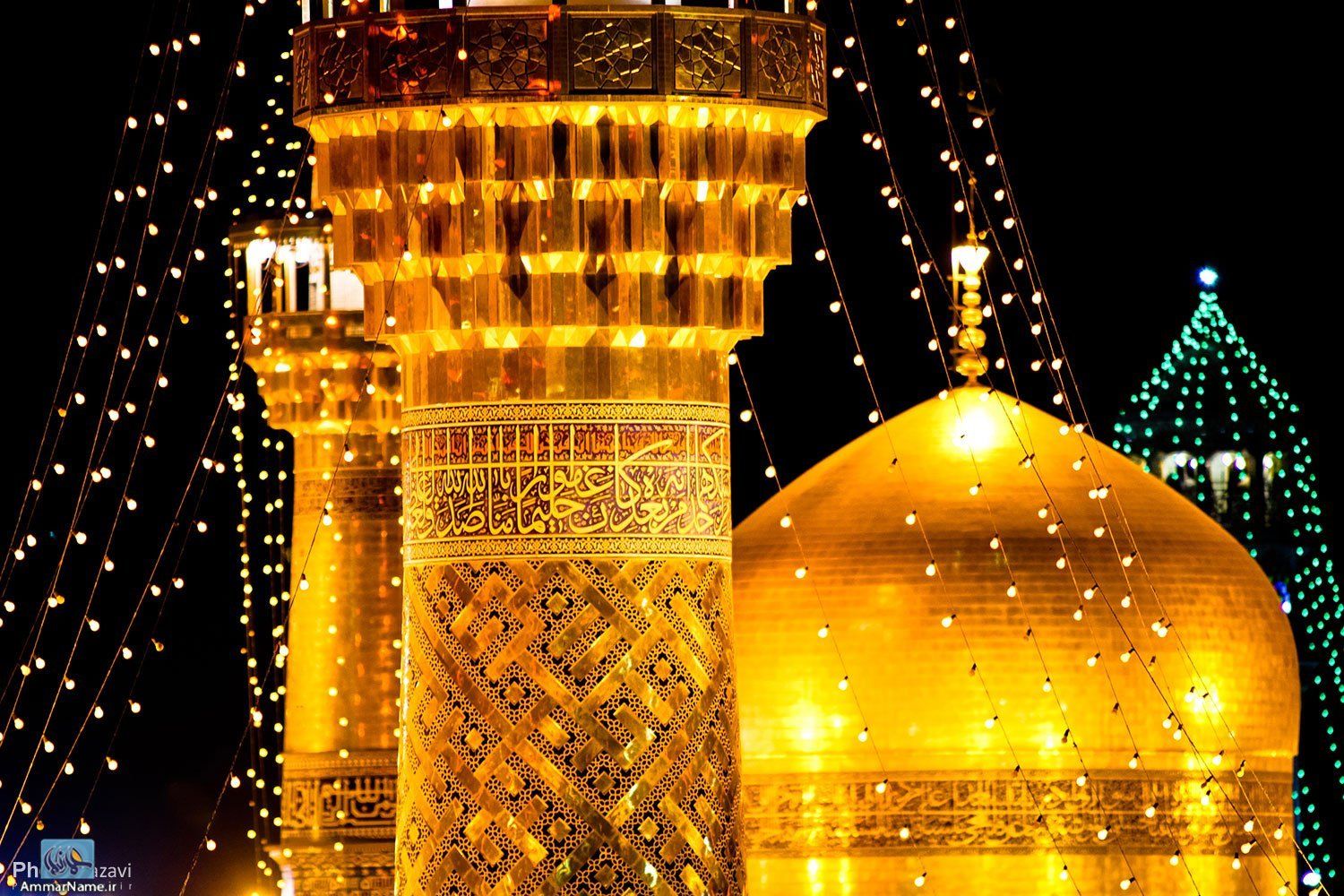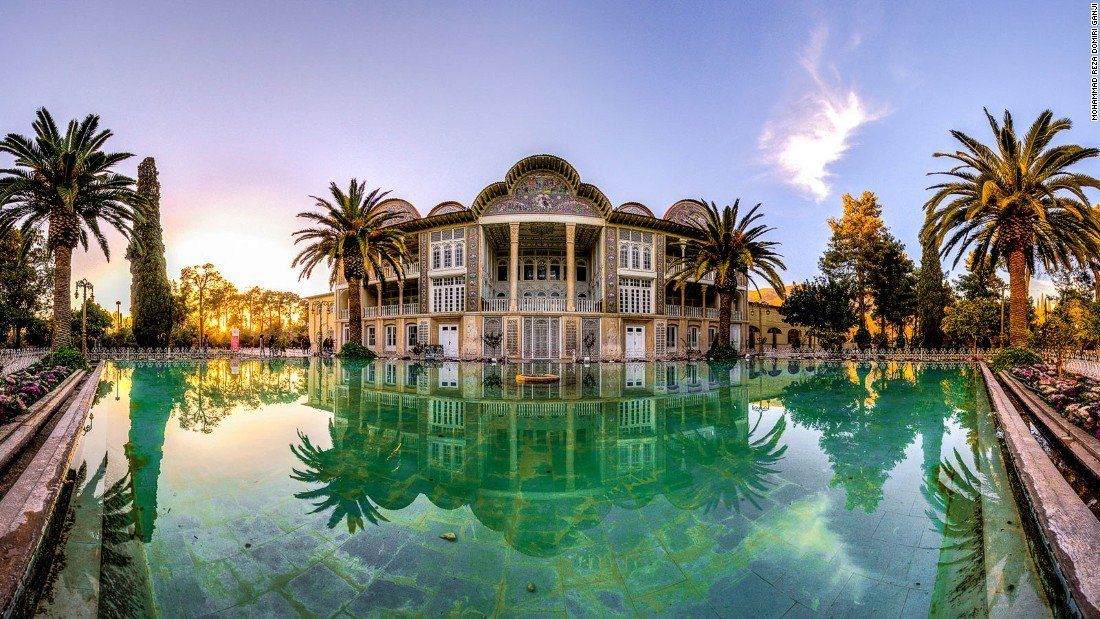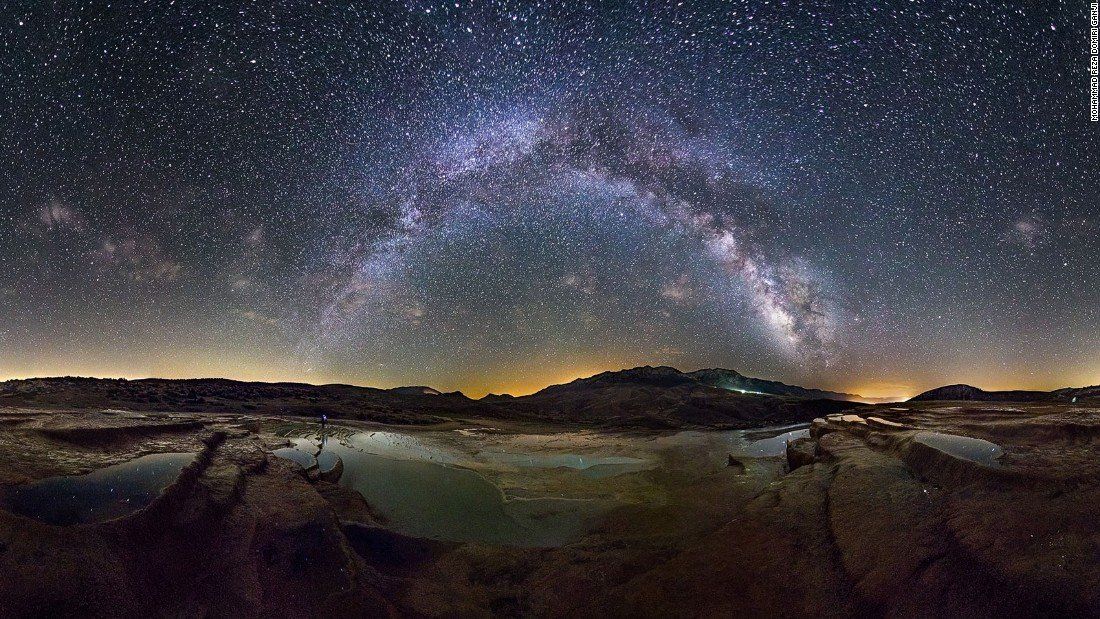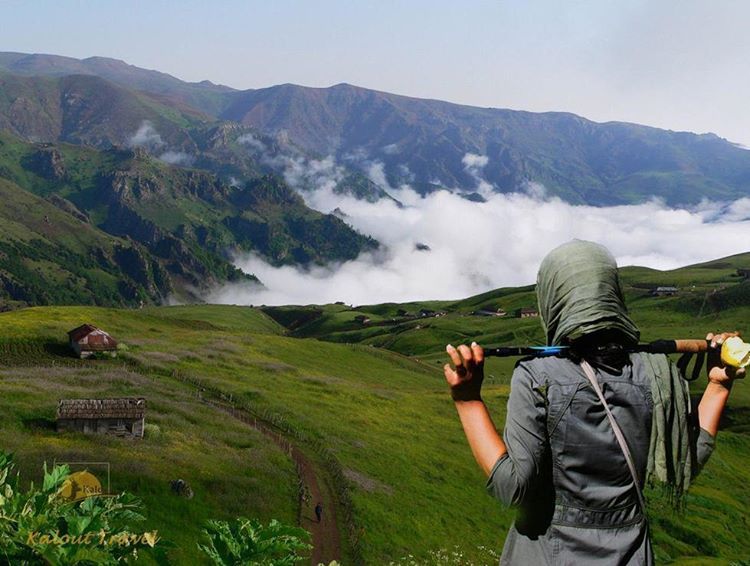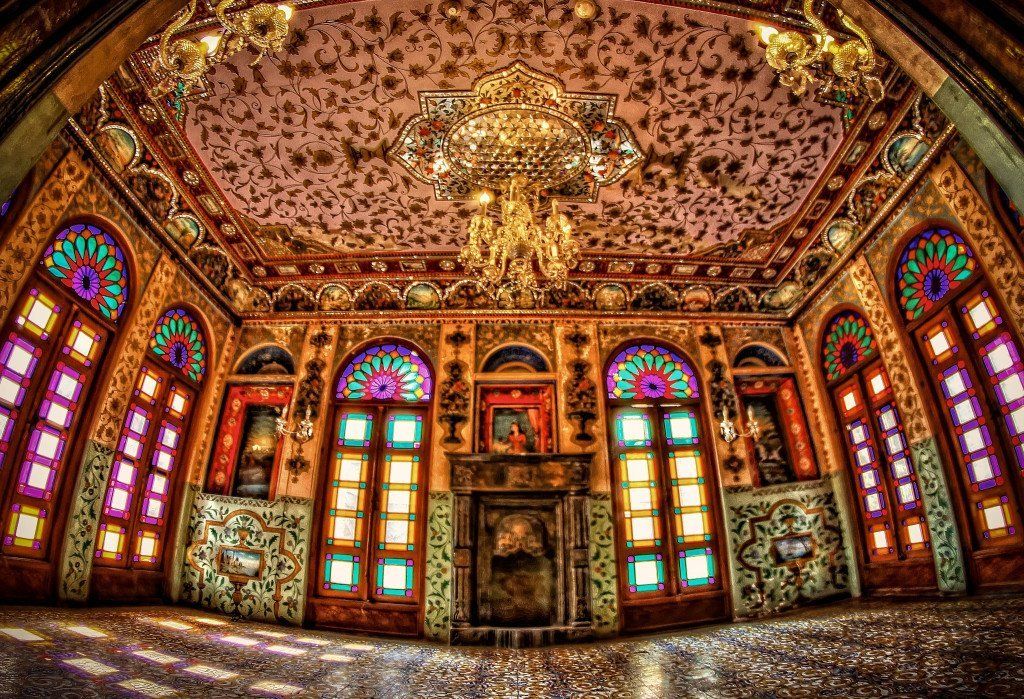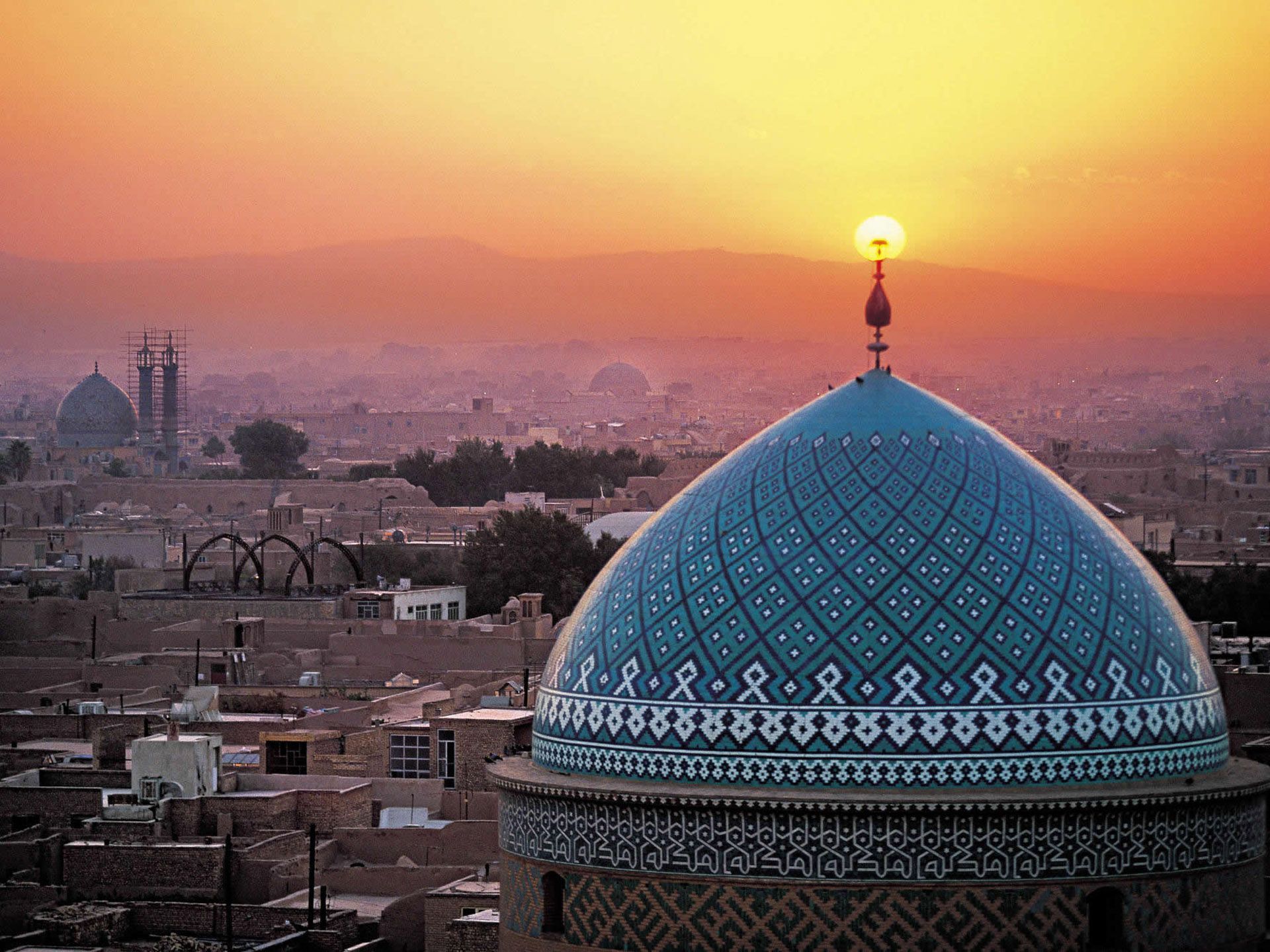Iranian Ethnic Groups
A majority of the population of Iran (approximately 67–80%) consists of Iranic peoples. The largest groups in this category include Persians (who form an absolute majority of the Iranian population) and Kurds, with smaller communities including Gilakis, Mazandaranis, Lurs, Tats, Talyshs and Baluchs.
Turkic groups constitute a substantial minority of about 15–24%, the largest group being the Azerbaijani, who are by far the second largest ethnicity in Iran as well as the largest minority group. Minor Turkic groups include the Turkmen and the Qashqai peoples.
Arabs account for about 2–3% of Iranian population. The remainder, amounting to about 1% of Iranian population, consists of a variety of minor groups, mainly comprising Assyrians, Armenians, Georgians, Circassians. and Mandaeans.
At the beginning of the 20th century, Iran had a total population of just below 10 million, with an approximate ethnic composition of: 6 million Persians (60%), 2.5 million Azeris (25%), 0.2 million Mazandaranis and Gilakis each (2% each).
The official language of Iran is Persian (Farsi). Persian is a West Iranian language of the Indo-European family of languages and is spoken in those parts of Iran where the Fars people, Persians, dwell, as well as in the Republic of Tajikistan. Tehran, Isfahan, Fars, Khorasan, Kerman and Yazd are some of the provinces inhabited by the Persians.
There are a number of other national and ethnic groups living in various parts of Iran. The historical background and anthropological origin of these groups have been subject of numerous research works, but researchers are not unanimous concerning many of the questions posed.
The most important of these groups with specific history, culture, customs, and language are the Turks, the Kurds, the Baluchis, the Arabs, the Turkmans and the Lurs.
There are also a number of ethnic minorities, but they have not been given much anthropological attention for a number of reasons, their small population and their extensive mixing with other Iranians being only two. The following is a general outline of the most populous ethnic and national groups mentioned.
Iranian-speaking peoples
Persians
Iran used to be called Persia until 1935, by that definition all Iranians were considered Persian regardless of their ethnicity. The term "Persians" refers to an ethnic group who speak the Western dialect of Persian and live in the modern country of Iran as well as the descendants of the people who emigrated from the territory of modern-day Iran to other countries. Today, the Persian community of Malaysia is the most populous, followed by the middle east in nations such as UAE, Bahrain, Iraq, Kuwait, Oman. Significant communities also lie in the west, (notably United States, Canada, Germany, United Kingdom, Sweden, France and other countries).
Ethnic Persians inhabit traditionally the Tehran province, Isfahan province, Fars province, Alborz province, Razavi Khorasan, South Khorasan, Yazd province, Kerman province, Bushehr province, Hormozgan province, Markazi province (Arak), Qom province, Gilan province, Mazandaran province Semnan province, Qazvin province, the majority of Hamadan province including the city of Hamadan, majority of the North Khorasan, majority of Khuzestan province, northern half of Sistan and Baluchistan (Zabol), southern and western half of Golestan province including the provincial capital of Gorgan. Ethnic Persians form also at least half of the populations in the bilingual cities of Kermanshah and Ahvaz along with Shia Kurds, Shia Arabs respectively.It is also noteworthy that most of the new generation of Lur, Bakhtiari and Kermanshahis consider themselves Persians and tend to speak Tehrani dialect of Persian. The majority of the Iranian immigrants in the west and other parts of the world also hail from Persian speaking cities especially from Tehran.
According to the CIA World Factbook, Persians in Iran constitute up to 61% of the country's population. Another source, Library of Congress states Iran's Persians compose 65% of the country's population. However, other sources mention that Persians only comprise 50.5%, or 55.3%. All these numbers include the Mazandaranis and Gilakis as Persian people, though the CIA World Factbook makes a distinction between the Persian language and the Mazandarani and Gilaki language, respectively.
Tats
The Tats of Iran are a Persian people near Alborz Mountains, especially in the south of Qazvin province. They use the Tati language, a group of northwestern Iranian dialects closely related to the Talysh language. Persian and Azeri are also spoken. Tats of Iran are mainly Shia Muslims and about 300,000 population
Kurds
The exact origin of the Kurds has not been yet been researched, even though they have an ancient history. The Kurds reside mainly in Kurdestan. It is a large territory extending to a major part of the mountainous region of southeast Turkey, northeast Iraq, northwest Iran and parts of Russia, as well as Syria.
Up until 1914, the Kurds and Kurdestan were divided among Iran, Russia and the Ottoman Empire. Under a treaty concluded between the Soviet Union and Turkey in 1921, the Kurdish-inhabited region of the Caucasus was annexed to the Ottoman Empire. Subsequently, a part of Kurdestan was placed under Iraqi and Syrian rule when the Mosul region was annexed to Iraq.
In Iran, the Kurds mainly reside in Kurdestan, Kermanshahan, and south of the Western Azarbaijan province. In 1600, a number of the Kurds were forced to settle in the north of Khorasan province, at Quchan and Bojnourd, by the Safavid King, Shah Abbas; they still reside there today.
The Kurds are of Iranian origin. Their language is a North-West Iranian language of the Indo-European family of languages and have several dialects. The two Goorani (southern Kurdish) and Zaza (western Kurdish) dialects are vastly different from Kormanji (pure Kurdish). The dialects spoken in Sanandaj, Kermanshahan, and Suleimania (Iraq) are variations of Kormanji. The Kurds' struggle for autonomy and independence dates back to the 19th century, when they were under the Ottoman Empire. Iranian Kurds also rebelled against the central government in 1880.
In 1946, the People's Republic of Kurdestan, led by Qazi Mohammad, was established in Iranian Kurdestan, with Mahabad as its capital. The Iranian army crushed the republic when the Red Army pulled out of Iran in the same year.
There are several Kurdish clans. The significant ones are Mokri in the north of Kurdestan, Bani-Ardalan to their south (with Sanandaj as their center), Jaaf in southern and Kalhor in southernmost Kurdestan at the border with Kermanshahan.
Most Kurds are Sunnis of the Shafe'i, and some are followers of Yazidi and Ahl-e Haq sects, but Qaderi and Naqshbandi brands of Sufism are also common in some parts of the Iranian Kurdestan, particularly in its southern regions. The Kurdish population is estimated to be around 1.5 million.
Lurs
Lur people, are Luri-speaking people inhabiting part of west – south western Iran. Most Lur are Shi’a. They the Fourth largest ethnic group in Iran after the Persians, Azeri and Kurds. They occupy Lorestan, Chaharmahal and Bakhtiari, Khuzestan, Isfahan, Fars, Bushehr and Kuh-Gilu-Boir Ahmed provinces. The authority of tribal elders remains a strong influence among the nomadic population. It is not as dominant among the settled urban population. As is true in Bakhtiari and Kurdish societies, Lur women have much greater freedom than women in other groups within the region. Thier language is Indo-European. They may be related to the Kurds from whom they "apparently began to be distinguished from... 1,000 years ago." The Sharafnama of Sharaf Khan Bidlisi "mentioned two Lur dynasties among the five Kurdish dynasties that had in the past enjoyed royalty or the highest form of sovereignty or independence." In the Mu'jam Al-Buldan of Yaqut al-Hamawi mention is made of the Lurs as a Kurdish tribe living in the mountains between Khuzestan and Isfahan. The term Kurd according to Richard Frye was used for all Iranian nomads (including the population of Luristan as well as tribes in Kuhistan and Baluchis in Kirman) for all nomads, whether they were linguistically connected to the Kurds or not.
Talyshs
Talyshes of Iran are about 430,000 and live mostly in the northwestern province of Ardebil in northwestern Iran (Iranian Azerbaijan). They are indigenous to a region shared between Azerbaijan and Iran which spans the South Caucasus and the southwestern shore of the Caspian Sea. Another significant amount of Talysh live therefore also in the Republic of Azerbaijan.
Balochis
The Baluchis reside mainly in Baluchestan, which is a dry region in the south-eastern part of the Iranian plateau. It extends from the Kerman desert to the rest of Bam and Beshagard mountains, and to the western borderline of the Sind and Punjab provinces of Pakistan. Baluchestan is divided between Iran and Pakistan. Iran and Pakistan had a dispute concerning the border dividing the two parts of Baluchestan, which was resolved by an agreement in 1959. The Iranian Baluchestan is a part of the Sistan and Baluchestan province. Its important towns are Zahedan, Zabol, Iranshahr, Saravan, Chahbahar, etc.
Historically, the Baluchis moved to Makran from Kerman to flee an expedition of the Seljuk in the 11th century. At the time, the Baluchis were nomads. They have never had a centralized government and have been living under a tribal system.
Baluch is the title of several tribes, a small number of which live in the Republic of Turkmenistan. The Baluchis speak Baluchi, which is a West Iranian language of the Indo-European family of languages that has been influenced by the eastern Iranian dialects. It has two branches of northern (Sorhadi) and southern (Makrani) Baluchis. The Iranian Baluch tribes are divided into a number of clans. The most important are the Bameri, Balideh, Bozorgzadeh, Riggi, Sardaar Zaie, Shahbakhsh, Lashari, Mobaraki, Mir Morad Zaie, Naroyee, Nooshsiravani, Barohooyee, Baram-Zehi, and Shir-Khanzayee tribes. The Iranian Baluchis are mostly of the Hanafi sect of the Sunni faith.
A few tribes in the Sistan area are also regarded as Baluch, but they speak Sistani. The language is an abandoned dialect of Persian. The notable ones of these tribes are: Sarbandi, Shahraki, Sargazi, Zamir-Farsyoon, Mir-Arab and Sanjarani.
Turkic
The largest Turkic group in Iran are the Iranian Azerbaijanis, forming by far the second largest ethnicity in the nation after the majority Persian population.
Smaller Turkic groups account for about 2% of Iranian population between them, about half of this number is accounted for by the Iranian Turkmen, the other half comprises various tribal confederacies such as the Qashqai or the Khorasani Turks.
Azerbaijanis
Iranian Azerbaijanis also known as Iranian Turks, a Turkic-speaking people of mixed Caucasian, Iranian and Turkic origin, who live mainly in Iranian Azerbaijan. Their number or percentage in the country are estimated differently as they are often mentioned to be politically motivated. They are by far the second largest ethnicity in Iran and the largest ethnic minority. The main estimations are stated below :
- 15%
- 15.5%
- 16%
- 17%
- 21.6
- 24-25 percent
- 25-30 percent
- Shaffer, Brenda (2003). Borders and Brethren: Iran and the Challenge of Azerbaijani Identity. MIT Press. pp. 221–225. ISBN 0-262-19477-5"There is considerable lack of consensus regarding the number of Azerbaijanis in Iran ...Most conventional estimates of the Azerbaijani population range between one-fifth to one-third of the general population of Iran, the majority claiming one-fourth" Azerbaijani student groups in Iran claim that there are 27 million Azerbaijanis residing in Iran."
- Minahan, James (2002). Encyclopedia of the Stateless Nations: S-Z. Greenwood Publishing Group. p. 1765. ISBN 978-0-313-32384-3"Approximately (2002e) 18,500,000 Southern Azeris in Iran, concentrated in the northwestern provinces of East and West Azerbaijan. It is difficult to determine the exact number of Southern Azeris in Iran, as official statistics are not published detailing Iran's ethnic structure. Estimates of the Southern Azeri population range from as low as 12 million up to 40% of the population of Iran – that is, nearly 27 million..."
In the Azerbaijan region, the population consists mainly of Azerbaijanis. Azeris are the largest group in Iranian Azerbaijan, while Kurds are the second largest group and a majority in many cities of West Azerbaijan Province. Iranian Azerbaijan is one of the richest and most densely populated regions of Iran. Many of these various linguistic, religious, and tribal minority groups, and Azeris themselves have settled widely outside the region. The majority Azeris are followers of Shi'a Islam. The Iranian Azerbaijanis, mainly reside in the northwest provinces, including the Iranian Azerbaijan provinces (East Azerbaijan, West Azerbaijan, Ardabil, and Zanjan), as well as regions of the North to Hamadan County and Shara District in the East Hamadan Province, some regions Qazvin Province. Some Azerbaijani minorities also live in Markazi, Kordestan, Gilan and Kermanshah.h Azerbaijanis also make up significant minorities in various parts of central Iran, especially Tehran, where they constitute 25% — one-third of the population.
Turkmen
The Turkmens or Turkmans are an ethnic minority who speak the Turkish language with the Eastern Oghoz accent. The same dialect is spoken in the Republic of Turkmenistan. They live in the Turkoman Sahra and in the Gorgan plains. The area is a fertile plain near the Iranian border with the Republic of Turkmenistan. It extends from the Atrak river in the north, to the Caspian Sea in the west, Quchan mountains to the east and the Gorgan river to the south.
Iranian Turkmans have been living in Iran since 550 AD, but they first began forming tribes from 750 AD onwards. They are the descendants of Central Asian Turks, who retained their ethnic identity during the Mongol invasion. They were divided among Iran, Russia and Afghanistan in 1885.
Not all the nine Turkoman tribes live in Iran. The most important Iranian Turkoman tribes are Kuklans and Yamotes. The Kuklans have six branches, and live in the central and eastern Turkoman Sahra. The Yamotes have two large clans, the Atabai and Jaafarbai, and live to the west of Turkoman Sahra. There are also smaller tribes to the east of the region in a few villages.
The Turkoman population is estimated to be around one million, and their biggest towns and cities are Gonbad Kavus, which is the center of Turkoman Sahra, Bandar Turkoman, Aq-Qala, and Gomishan. The largest group of Turkman Muslims follow the Hanafi branch of the Sunni sect, but some Turkmans are followers of the Naqshbandieh sufism.
Turkic tribal groups
The Qashqai people mainly live in the provinces of Fars, Khuzestan and southern Isfahan, especially around the city of Shiraz in Fars. They are bilingual and speak the Persian language and the Qashqai language which is a member of the Turkic family of languages. The Qashqai were originally nomadic pastoralists and some remain so today. The traditional nomadic Qashqai travelled with their flocks each year from the summer highland pastures north of Shiraz roughly 480 km or 300 mi south to the winter pastures on lower (and warmer) lands near the Persian Gulf, to the southwest of Shiraz. The majority, however, have now become partially or wholly sedentary. The trend towards settlement has been increasing markedly since the 1960s.
The Khorasani Turks or Qizilbash are Turkic-speaking people inhabiting part of northeastern Iran, and in the neighboring regions of Turkmenistan up to beyond the Amu Darya River. They speak the Khorasani Turkic and live in the North Khorasan, Razavi Khorasan and Golestan provinces of Iran alongside Turkmens.
Semitic
Arabs
2% of Iran's citizens are Arabic-speakers. A 1998 report by UNCHR reported 1 million of them live in border cities of Khuzestan Province, they are believed to constitute 20% to 25% of the population in the province, most of whom being Shi'a. In Khuzestan, Arabs are a minority in the province .They are the dominant ethnic group only in Shadegan, Hoveyzeh and Susangerd, a minority in the rural areas of Abadan (The city of Abadan is inhabited by ethnic Persians who speak the Abadani dialect), together with Persians, Arabs are one of the two main ethnic groups in Ahvaz. All other cities in Khuzestan province, are either inhabited by the Lur, Bakhtiari or Persian ethnic groups. The historically large and oil rich cities like Mahshahr, Behbahan, Masjed Soleyman, Izeh, Dezful, Shushtar, Andimeshk, Shush, Ramhormoz, Baghemalak, Gotvand, Lali, Omidieh, Aghajari, Hendijan, Ramshir, Haftkel, Bavi are inhabited by people who speak either Luri, Bakhtiari and Persian languages. There are smaller communities in Qom where there are a significant number of Arabs being of Lebanese descent, as well as Khorasan and Fars provinces. Iranian Arab communities are also found in Bahrain, Iraq, Lebanon, Kuwait, United Arab Emirates and Qatar.
Assyrians
The Assyrian people of Iran are a Semitic people who speak modern Assyrian, a neo-Aramaic language descended from Classical Syriac, and are Eastern Rite Christians belonging mostly to the Assyrian Church of the East and, to a lesser extent, to the Chaldean Catholic Church, Syriac Orthodox Church and Ancient Church of the East. They share a common identity, rooted in shared linguistic and religious traditions, with Assyrians in Iraq and elsewhere in the Middle East such as Syria and Turkey, as well as with the Assyrian diaspora.
The Assyrian community in Iran numbered approximately 200,000 prior to the Islamic Revolution of 1979. However, after the revolution many Assyrians left the country, primarily for the United States, and the 1996 census counted only 32,000 Assyrians. Current estimates of the Assyrian population in Iran range from 32,000 (as of 2005) to 50,000 (as of 2007). The Iranian capital, Tehran, is home to the majority of Iranian Assyrians; however, approximately 15,000 Assyrians reside in northern Iran, in Urmia and various Assyrian villages in the surrounding area.
Jews
Judaism is one of the oldest religions practiced in Iran and dates back to the late biblical times. The biblical books of Isaiah, Daniel, Ezra, Nehemiah, Chronicles, and Esther contain references to the life and experiences of Jews in Iran.
By various estimates, 10,800 Jews remain in Iran, mostly in Tehran, Isfahan, and Shiraz. BBC reported Yazd is home to ten Jewish families, six of them related by marriage, however some estimate the number is much higher. Historically, Jews maintained a presence in many more Iranian cities. Iran supports by far the largest Jewish population of any Muslim country.
A number of groups of Jews of Iran have split off since ancient times. They are now recognized as separate communities, such as the Bukharan Jews and Mountain Jews. In addition, there are several thousand in Iran who are, or who are the direct descendants of, Jews who have converted to Islam and the Bahá'í Faith.
Mandaeans
Iranian Mandaeans live mainly in the Khuzestan Province in southern Iran. Mandeans are a Mandaic speaking Semitic race who follow their own distinctive Gnostic religion Mandaeism, venerating John the Baptist as the true Messiah. Like the Assyrians of Iran, their origins lie in ancient Mesopotamia. They number some 10,000 people in Iran, though Alarabiya has put their number as high as 60,000 in 2011.
Caucasus-derived groups
Armenians
The current Iranian-Armenian population is somewhere around 500,000. They mostly live in Tehran and Jolfa district. After the Iranian Revolution, many Armenians immigrated to Armenian diasporic communities in North America and western Europe. Today the Armenians are Iran's largest Christian religious minority, followed by Assyrians.
Georgians
Iranian Georgians are an ethnic group living in Iran. They are Twelver Shia Muslims, whereas the vast majority of Georgians elsewhere in the world are Christian. The Georgian dialect is still spoken in Iran.
The Georgian language is the only Caucasian language fully functioning in Iran and it's spoken only by those that live in Fereydan and Fereydunshahr, and in smaller sockets all over Iran. Almost all other communities of Iranian Georgians in Iran apart those in Fereydan and Fereydunshahr have already lost their language, but remain a clear Georgian conscious.
Once a very large minority in Iran mainly due to mass deportations by the various early modern age and modern age Iranian empires (Safavids, Afsharids, and Qajars), of their Georgian subjects, nowadays, due to intermarrying and assimilating the number of Georgians in Iran is estimated to be over 100,000. However, the amount of Iranians with partial or assimilated Georgian ancestry is estimated to exceed millions.
The Georgian language is still used by many of the Georgians in Iran. The center of Georgians in Iran is Fereydunshahr, a small city, 150 km to the west of Isfahan. The western part of Isfahan province is historically called Fereydan. In this area there are 10 Georgian towns and villages around Fereydunshahr. In this region the old Georgian identity is retained the best compared to other places in Iran. In many major Iranian cities, such as Tehran, Isfahan, Karaj and Shiraz, and Rasht live Georgians too.
In many other places such as Najafabad, Rahmatabad, Yazdanshahr and Amir Abad (near Isfahan) there are also Georgian sockets and villages. In Mazandaran Province in northern Iran, there are ethnic Georgians too. They live in the town of Behshahr, and also in Behshahr county, in Farah Abad, and many other places, which are usually called "Gorji Mahalle" (Georgian Neighbourhood). Most of these Georgians no longer speak the Georgian language, but retain aspects of Georgian culture and a Georgian conscious. Some argue that Iranian Georgians retain remnants of Christian traditions, but there is no evidence for this.
Circassians
Like with the Georgians, once a very large minority in Iran all the way from the Safavid to the Qajar era, the vast majority of the Circassians have been assimilated into the population nowadays. However, significant numbers remain present, and they are the second-largest Caucasus derived ethnos in the nation after the Georgians.
From Sir John Chardin's "Travels in Persia, 1673–1677":
There is scarce a Gentleman in Persia, whose Mother is not a Georgian, or a Circassian Woman; to begin with the King, who commonly is a Georgian, or a Circassian by the Mother's side.
Circassians alongside the Georgians were deported en masse by the Shah's to fulfil roles in the civil administration, the military, and the royal Harem, but also as craftsmen, farmers, amongst other professions. Circassian women were both in Ottoman Turkey and Persia desired for their beauty, while the men were known as fiercesome warriors. Notable Iranians of Circassian descent of the past include Teresia Sampsonia, Shah Abbas II, Shah Suleiman I, Pari Khan Khanum (daughter of Shah Tahmasp, involved in many court intrigues), Shamkhal Sultan, Jamshid Beg (the assassinator of Shah Ismail II), Anna Khanum, and many more. Traces of Circassian settlements have lasted into the 20th century, and small sockets still exist scattered over the country, even after centuries of absorbing and assimilating, such as in Fars, Rasht, Aspas, Gilan, Mazandaran, and the capital Tehran (due to contemporary internal migration). Their total number nowadays is unknown due to heavy assimilation and lack of censuses based on ethnicity, but are known to be significant. Due to the same assimilation however, no sizeable number speaks the Circassian language anymore.
Recent immigration
Most of the large Circassian migrational waves towards mainland Iran stem from the Safavid and Qajar era, however a certain amount also stem from the relatively recent arrivals that migrated as the Circassians were displaced from the Caucasus in the 19th century. A Black African population exists due to historical slavery. A substantial number of Russians arrived in the early 20th century as refugees from the Russian revolution, but their number has dwindled following the Iran crisis of 1946 and the Iranian Revolution. In the 20th to 21st centuries, there has been limited immigration to Iran from Turkey, Iraqis (especially huge numbers during the 1970s known as Moaveds), Afghanistan (mostly arriving as refugees in 1978), Lebanese (especially in Qom, though a Lebanese community has been present in the nation for centuries), Indians (mostly arriving temporarily during the 1950s to 1970s, typically working as doctors, engineers, and teachers), Koreans (mostly in the 1970s as labour migrants) and China (mostly since the 2000s working in engineering or business projects). Limited immigration from Pakistan is partly due to labour migrants and partly to Balochi ties across the Iranian-Pakistani border. About 200,000 Iraqis arrived as refugees in 2003, mostly living in refugee camps near the border; an unknown number of these has since returned to Iraq.
Daha fazla okuma:






















